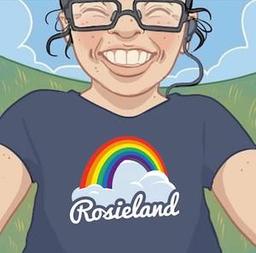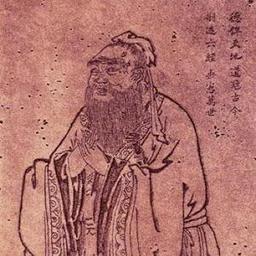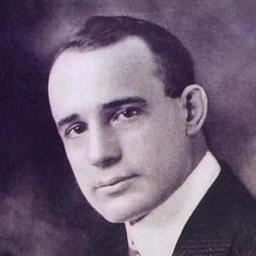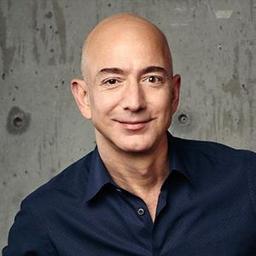361 Quotes
"the “GLEe” model to articulate the product that establishes the company’s initial beachhead, how you might lead from there, along with how you will expand even further."
— Gibson Biddle
Five Answers to Questions About Product Vision & Roadmaps"A product vision enables teams to embrace a long-term mindset along with a somewhat flexible, step-by-step approach that helps the team navigate from where it is today to its hoped-for future."
— Gibson Biddle
Five Answers to Questions About Product Vision & Roadmaps"Get Big on _____________ Lead __________________ Expand into ____________"
— Gibson Biddle
Five Answers to Questions About Product Vision & Roadmaps"the product vision does not have to be “right.” The product vision is vague about the exact timing, and each step is actually a hypothesis. But it’s critical to share a product vision that helps investors and employees understand how big the opportunity may be, along with a rough plan of how you will eventually get there."
— Gibson Biddle
Five Answers to Questions About Product Vision & Roadmaps"The key is that all functions within a company are aware of the potential steps and agree on the level of investment for each stage at any moment in time. This helps the company to stay aligned"
— Gibson Biddle
Five Answers to Questions About Product Vision & Roadmaps"The key is for organizations to have shared language around the potential step-by-step product progression, along with a rough sense of the optimal level of investment at each stage."
— Gibson Biddle
Five Answers to Questions About Product Vision & Roadmaps"overcommunicate to keep everyone aligned."
— Gibson Biddle
Five Answers to Questions About Product Vision & Roadmaps"DHM model: Delight customers in Hard-to-copy, Margin-enhancing ways."
— Gibson Biddle
How to Balance Customer Delight & Profits"What customers say doesn’t always match their behavior. You need A/B testing to measure behavior change."
— Gibson Biddle
How to Balance Customer Delight & Profits"It’s helpful to understand how much customers value different features. We invested in things our members valued (broader DVD selection, lower prices, next-day DVD delivery). We invested less in features they didn’t value (new release DVDs, social, unique movie-finding tools)."
— Gibson Biddle
How to Balance Customer Delight & Profits"We never established a more precise word-of-mouth factor, though I’ve heard that Amazon sometimes uses an 8X factor. A large WOM multiple encourages more investment in customer delight"
— Gibson Biddle
How to Balance Customer Delight & Profits"The free trial reminder builds trust, which creates a more robust, world-class brand. Although Netflix loses $50 million, it builds a long-term advantage through its hard-to-copy brand."
— Gibson Biddle
How to Balance Customer Delight & Profits"When you make product decisions, ask yourself if it’s a high or low-stakes decision. If the magnitude is high and it’s hard to reverse, consider the decision carefully. Give it plenty of time, and gather as much data as possible. If the stakes are low and the decision is easy to reverse, decide quickly, then move on. Most decisions by product leaders are low stakes (although they almost always believe the opposite). Postponing decisions creates ambiguity, which makes things worse. Be decisive."
— Gibson Biddle
How to Balance Customer Delight & Profits"We continually A/B tested different positioning and branding approaches on the non-member homepage. We focused on two key metrics:"
— Gibson Biddle
Branding for Builders"The headline provides an executive summary of the model. In cases where you develop an advertising campaign, it is the title of an ad campaign."
— Gibson Biddle
Branding for Builders"Use clear, precise sixth-grade language. Consumers are busy and don’t have time to parse complicated ideas."
— Gibson Biddle
Branding for Builders"1.) The positioning model describes the first three components of the brand definition: positioning, customer benefit, and personality."
— Gibson Biddle
Branding for Builders"marketing defines the brand, and product brings the brand to life by building a great product."
— Gibson Biddle
Branding for Builders"2.) The brand pyramid adds the two remaining elements: aspiration and emotion."
— Gibson Biddle
Branding for Builders"1.) In simple terms, how do you describe your product or company?"
— Gibson Biddle
Branding for Builders"3.) How do you define its personality? (The question behind the question: how do you want your product to relate to customers?)"
— Gibson Biddle
Branding for Builders"Be brief. Most teams begin with lots of complicated ideas. The key is to simplify and focus on a few, easy-to-communicate ideas."
— Gibson Biddle
Branding for Builders"Defining the personality of your product describes how you want your brand to relate to customers."
— Gibson Biddle
Branding for Builders"Why does the brand model incorporate emotion? The simple answer: it makes things memorable."
— Gibson Biddle
Branding for Builders"Acknowledging emotion in the brand framework helps make products memorable."
— Gibson Biddle
Branding for Builders"In the long-term, if you fully deliver the product and its emotional benefits to your customers, how might your product dent the universe? Think twenty years into the future."
— Gibson Biddle
Branding for Builders"The “something bigger” was to deliver an entertainment experience that transported you to the magical place movies can take you — to escape reality."
— Gibson Biddle
Branding for Builders"Think Big. Apple delivers revolutionary innovation, Nike enables customers to fulfill their full human potential, and SpaceX is working to save the human race by colonizing Mars. The “something bigger” is meant to inspire your team to build a great product and company over fifty years."
— Gibson Biddle
Branding for Builders"The important thing is to take your best shot at defining the model, then explore the various ideas with consumers via focus groups, surveys, but most importantly, A/B tests."
— Gibson Biddle
Branding for Builders"1.) Trials/Visitors. Historically, 2% of visitors to the non-member site started a free trial. 2.) Conversion from free to paid membership. At the end of a free trial, about 90% of customers converted to paid membership."
— Gibson Biddle
Branding for Builders"Customers weren’t interested in sharing their movie tastes with friends, and when they did, their friends thought they had terrible taste!"
— Gibson Biddle
Branding for Builders"“Today, brands are not the preserve of a marketing department. Brands are too important to be left to the marketing department — or any other ‘department,’ come to that. Organizational ghettoes do not create vibrant world-changing brands.” — Thomas Gad"
— Gibson Biddle
Branding for Builders"Don’t let past investment inform future investment. Ask yourself, “Given what we know today, how much should we invest going forward?”"
— Gibson Biddle
What We Can Learn From Netflix’s Failed Social Strategy"Small wins cloud judgment. The proxy metric kept going up and to the right, but Netflix failed to recognize early enough that it would never be big enough to matter."
— Gibson Biddle
What We Can Learn From Netflix’s Failed Social Strategy"As a strategy, social makes sense. Friends promised to fulfill the holy troika: to delight customers in hard-to-copy, margin-enhancing ways."
— Gibson Biddle
What We Can Learn From Netflix’s Failed Social Strategy"Friends failed to get big enough to improve retention, but the real question is, why did Netflix persist so long?"
— Gibson Biddle
What We Can Learn From Netflix’s Failed Social Strategy"Why does Netflix fail so frequently? Two reasons: 1.) There are many biases that cloud human judgment, and 2.) it’s hard to invent the future."
— Gibson Biddle
What We Can Learn From Netflix’s Failed Social Strategy"It’s hard to quit when the CEO is passionate about an idea."
— Gibson Biddle
What We Can Learn From Netflix’s Failed Social Strategy"Netflix assumed the failure was in the execution, not in the idea."
— Gibson Biddle
What We Can Learn From Netflix’s Failed Social Strategy"Paradoxically, small success makes it hard to kill features."
— Gibson Biddle
What We Can Learn From Netflix’s Failed Social Strategy"Behold the idea and not the source."
— Gibson Biddle
What We Can Learn From Netflix’s Failed Social Strategy"Temper your pride in ownership. As builders, companies love to build stuff. And nobody likes to kill projects. Passion and hope can cloud judgment."
— Gibson Biddle
What We Can Learn From Netflix’s Failed Social Strategy"Setting a goal guards against we’ll-figure-it-out-next-quarter youthful enthusiasm."
— Gibson Biddle
What We Can Learn From Netflix’s Failed Social Strategy"Successful projects develop momentum quickly. Customers enthusiastically embrace good ideas despite early shortcomings."
— Gibson Biddle
What We Can Learn From Netflix’s Failed Social Strategy"When engaged in a project, your humanity can cloud a disciplined evaluation of its merit. Take a moment to reevaluate, discounting both executive-level support and conventional wisdom. Remain objective by setting an objective goal, taking stock in your pride of ownership, and asking, “What should we invest in today, regardless of past investment decisions?”"
— Gibson Biddle
What We Can Learn From Netflix’s Failed Social Strategy"Crisp execution and high-cadence experimentation are critical, but having a clear product strategy supercharges your efforts. Strategic thinking enables you to think ahead, to effectively “skip quarters,” and to build enduring value."
— Gibson Biddle
How to Define Your Product Strategy"I shifted my focus from satisfying customers to delighting them. I also learned about the balancing act of delight and margin, and what makes products hard-to-copy."
— Gibson Biddle
How to Define Your Product Strategy"An example: Netflix’s personalization technology. Because Netflix knows the movie tastes of 185M members, they can generate accurate forecasts of streaming hours for each potential title, and spend accordingly. They effectively “right-size” their investment in original content."
— Gibson Biddle
1 The DHM Model"Hamilton Helmer’s book, “7 Powers,” outlines seven hard-to-copy advantages."
— Gibson Biddle
1 The DHM Model"Product strategy answers the question, “How will your product delight customers, in hard to copy, margin-enhancing ways?”"
— Gibson Biddle
1 The DHM Model"Think about how your product delights customers, both now and in the future."
— Gibson Biddle
1 The DHM Model"Brand. Building trust with customers takes years of delivering value with a minimum of “trustbusters.”"
— Gibson Biddle
1 The DHM Model"Counter-positioning. This “power” — an offer to customers that is impossible for competitors to match — is rare."
— Gibson Biddle
1 The DHM Model"Switching costs. This hard-to-copy advantage exists when a customer invests so much in one product that it’s hard to switch to another."
— Gibson Biddle
1 The DHM Model"The company was founded in 2001 as “Craigslist for college students” but didn’t get traction until it launched textbook rental in 2008."
— Gibson Biddle
12: A Startup Case Study: Chegg"Our service provided overwhelming value to students who could rent a textbook for $50 instead of buying a new book for $200."
— Gibson Biddle
12: A Startup Case Study: Chegg"Physical books offered advantages students valued that eTextbooks couldn’t match, most noticeably the ability to highlight text using a marker."
— Gibson Biddle
12: A Startup Case Study: Chegg"Create a “student graph.” We built a dataset of all courses on each campus. It included all the textbooks and content that were part of the course."
— Gibson Biddle
12: A Startup Case Study: Chegg"Develop unique, personalization technology. We built this capability using the student graph data, above."
— Gibson Biddle
12: A Startup Case Study: Chegg"Social (a Facebook-style newsfeed based on student graph data)"
— Gibson Biddle
12: A Startup Case Study: Chegg"In sorting through the “DHM” ideas and experiments above, we teased out the following product strategies."
— Gibson Biddle
12: A Startup Case Study: Chegg"Dan Rosensweig, our CEO, was confident in our ability to raise capital and prioritized “GEM” as follows:"
— Gibson Biddle
12: A Startup Case Study: Chegg"Growth, measured by year-over-year growth in student accounts and revenues."
— Gibson Biddle
12: A Startup Case Study: Chegg"The brand, reinforced by the large orange boxes on campuses, did experience viral growth, however."
— Gibson Biddle
12: A Startup Case Study: Chegg"We began by providing step-by-step solutions to all the answers in textbooks. Later, we expanded into other homework help areas — writing help, tutoring, flashcards — to create a monthly subscription service called “Chegg Study.”"
— Gibson Biddle
12: A Startup Case Study: Chegg"The roadmap provided a relatively high-level view that demonstrated how the product strategies might play out over time."
— Gibson Biddle
12: A Startup Case Study: Chegg"I outlined how Netflix hoped to “Get Big,” “Lead,” and “Expand” during its startup phase."
— Gibson Biddle
11: A Case Study: Netflix 2020"The intent of the “GLEe model” is to encourage product leaders to think long-term and to think big."
— Gibson Biddle
11: A Case Study: Netflix 2020"I’ve outlined four strategies that I think are most important."
— Gibson Biddle
11: A Case Study: Netflix 2020"Here’s how the company might force-rank growth, engagement, and monetization today:"
— Gibson Biddle
11: A Case Study: Netflix 2020"But because retention is so hard to move, the product team needs a more sensitive proxy metric. I speculate that the “percentage of members who watch at least 40 hours/month” is a reasonable proxy"
— Gibson Biddle
11: A Case Study: Netflix 2020"How to keep strategy “front and center” and accelerate both results & learning."
— Gibson Biddle
10 The Quarterly Product Strategy Meeting"My peers describe my communication style as “Lather, Rinse, Repeat,” which is a fair assessment."
— Gibson Biddle
10 The Quarterly Product Strategy Meeting"At Netflix, I began with monthly product strategy meetings for each swimlane, then evolved to a Quarterly Product Strategy meeting. Over time, this meeting became a mechanism for the Netflix culture."
— Gibson Biddle
10 The Quarterly Product Strategy Meeting"An essential part of the Netflix culture is to enable teams to become highly aligned and loosely coupled. “Highly aligned” means each group understands the overall product strategy and how they contribute to the company’s success."
— Gibson Biddle
10 The Quarterly Product Strategy Meeting"“Loosely coupled” means teams occasionally check in with each other but avoid the trap of ‘tight coupling’ — consulting multiple teams for every decision they make."
— Gibson Biddle
10 The Quarterly Product Strategy Meeting"Another Netflix principle is “context, not control.” The intent is to provide context through strategy so that focused teams make decisions without rules or heavy-handed process."
— Gibson Biddle
10 The Quarterly Product Strategy Meeting"Use slides, but don’t polish them. Slides are a good conversation starter, but you don’t want “death by Powerpoint.” The goal is to deliver crisp articulation of your strategy along with test results that inspire debate."
— Gibson Biddle
10 The Quarterly Product Strategy Meeting"Here is a rough outline for your first quarterly product strategy meeting:"
— Gibson Biddle
10 The Quarterly Product Strategy Meeting"Articulation of the high-level strategy by the head of the product team. Key team members can also share insights relevant to everyone in the room."
— Gibson Biddle
10 The Quarterly Product Strategy Meeting"The strategy for each swimlane, presented by each product leader."
— Gibson Biddle
10 The Quarterly Product Strategy Meeting"A wrap-up at the end of the session. This time provides an opportunity for general discussion, to debate unresolved issues, and to frame which information should be shared broadly outside the room."
— Gibson Biddle
10 The Quarterly Product Strategy Meeting"I have participants complete a Net Promoter Score survey to understand what went well and what could be better. The intent is to make each meeting better than the one before."
— Gibson Biddle
10 The Quarterly Product Strategy Meeting"Prioritizing growth, engagement, and monetization to keep organizations aligned."
— Gibson Biddle
9 The GEM Model"One of the biggest causes is differing opinions on how to prioritize growth, engagement, and monetization."
— Gibson Biddle
9 The GEM Model"The GEM model forces cross-functional teams to prioritize these factors and helps build a metrics-focused organization."
— Gibson Biddle
9 The GEM Model"Engagement: As measured by monthly retention. (Think of this as a proxy for product quality.)"
— Gibson Biddle
9 The GEM Model"Our priority was monetization to answer the question, “How can Netflix deliver a higher-margin business?”"
— Gibson Biddle
9 The GEM Model"At different times in a company’s life, the priorities change. It’s an excellent habit to reassess the priority of these three factors every six months or so."
— Gibson Biddle
9 The GEM Model"Thinking about the overall needs of your company, how do you prioritize growth, engagement, and monetization? Which metric will you use to measure each?"
— Gibson Biddle
9 The GEM Model"The GLEe model helps product leaders to form a product vision to address these criticisms."
— Gibson Biddle
8 The GLEe Model"The model encourages teams to think big, think long-term, and describes a phased, step-by-step approach to build a product that “dents the universe.”"
— Gibson Biddle
8 The GLEe Model"The GLEe model encourages teams to ask, “What’s next?” and forces long-term thinking. To invent the future, you have to be optimistic, and long-term thinking enables an “anything is possible” attitude. By long-term, I mean 3–5 years, and in this timeframe, most things are possible. But the GLEe model goes far beyond this to encourage product leaders to think 10–15 years ahead."
— Gibson Biddle
8 The GLEe Model"By 2012, Netflix finally established a hard to copy network effect through its device ecosystem."
— Gibson Biddle
8 The GLEe Model"The GLEe model also reinforces that you don’t have to do everything at once."
— Gibson Biddle
8 The GLEe Model"As Netflix expanded globally, personalization helped connect members with movies they loved, regardless of nationality."
— Gibson Biddle
8 The GLEe Model"Finding a high-level product strategy that supports multiple phases of a company’s growth is rare. But if you accomplish this, it builds a huge, hard to copy advantage."
— Gibson Biddle
8 The GLEe Model"1) What is the initial product that enables the company and product to “Get Big” over the first 3–5 years of its life?"
— Gibson Biddle
8 The GLEe Model"2) What will you “Lead?” Three to five years in the future, what is the next wave your product or company will ride — the equivalent of internet video for Netflix?"
— Gibson Biddle
8 The GLEe Model"3) Once your product establishes a leadership position, how might it “Expand” even further?"
— Gibson Biddle
8 The GLEe Model"It’s especially hard to guess the timing of projects, given this uncertainty."
— Gibson Biddle
7 The Product Roadmap"When I share a roadmap, I express confidence about the next quarter’s projects but highlight that the content and timing of the subsequent quarters are highly speculative."
— Gibson Biddle
7 The Product Roadmap"The roadmap articulates the focus and organization of the product team."
— Gibson Biddle
7 The Product Roadmap"The roadmap is an artifact — an expression — of your product strategy."
— Gibson Biddle
7 The Product Roadmap"The roadmap tells a story about how the overall strategy for the product team might play out over time."
— Gibson Biddle
7 The Product Roadmap"One note on organizing product teams: I favor structures where each product leader has a clear proxy metric that communicates what success looks like in their area."
— Gibson Biddle
7 The Product Roadmap"The percentage of new members who rate at least 50 movies in their first six weeks with the service."
— Gibson Biddle
6 A Strategy for Each Swimlane"The theory was that if members were willing to rate lots of movies, it meant they valued the results of their rating: personalized movie choices."
— Gibson Biddle
6 A Strategy for Each Swimlane"Given an in-depth knowledge of members’ movie tastes, and data about each movie, matching algorithms would connect members with personalized movie choices."
— Gibson Biddle
6 A Strategy for Each Swimlane"Over time, Netflix moved the proxy metrics, and in the long-term, proved that a highly personalized experience improved retention."
— Gibson Biddle
6 A Strategy for Each Swimlane"It took more than a decade to prove that personalization improved retention. A steady improvement in the proxy metrics, however, provided a strong signal that we would eventually succeed."
— Gibson Biddle
6 A Strategy for Each Swimlane"Each product leader worked with a dedicated team of engineers, designers, and data analysts, and could articulate their high-level engagement metric, along with the key strategies, proxy metrics, and projects for their area."
— Gibson Biddle
6 A Strategy for Each Swimlane"The key to the Strategy/Metric/Tactic lockup is to identify a high-level product strategy, assign a proxy metric to measure the strategy’s effectiveness, then brainstorm a set of projects that will move the metric."
— Gibson Biddle
5 Working Bottom-up"I often ask a team to list all the projects they believe are important, then sort the projects into “buckets” of ideas."
— Gibson Biddle
5 Working Bottom-up"The label for each of these buckets often indicates the implied strategy."
— Gibson Biddle
5 Working Bottom-up"In contrast, personalization efforts at Netflix are an example of a top-down approach. We decided that the high-level hypothesis — creating a highly personalized experience will improve retention — then identified a proxy metric and brainstormed projects to move the metric."
— Gibson Biddle
5 Working Bottom-up"Look at the list of projects you believe are essential, then sort them to identify high-level themes."
— Gibson Biddle
5 Working Bottom-up"How to assign metrics and tactics to each product strategy."
— Gibson Biddle
3 The Strategy/Metric/Tactic Lockup"At Netflix, the high-level engagement metric — that defined the product team’s ability to make the product better — was monthly retention."
— Gibson Biddle
3 The Strategy/Metric/Tactic Lockup"Improving retention is hard — the progress is almost glacial. You need more sensitive, lower-level proxy metrics to see if your strategies are working."
— Gibson Biddle
3 The Strategy/Metric/Tactic Lockup"Each of our product strategies had a clear proxy metric to determine if the strategy worked or not. And there were typically two to three projects — think of these as tactics — that brought the strategy to life."
— Gibson Biddle
3 The Strategy/Metric/Tactic Lockup"Over the years, we learned to double down in areas where we moved our proxy metrics and demonstrated retention improvements. We also learned to cut our losses when projects didn’t deliver."
— Gibson Biddle
3 The Strategy/Metric/Tactic Lockup"The next step is to tease out high-level hypotheses that combine delight, hard to copy advantage, and margin. Achieving two or three of these objectives with a single strategy is at the heart of an effective product strategy."
— Gibson Biddle
2 From DHM to Product Strategy"Easy. Netflix wasn’t simple at launch but became simpler over time."
— Gibson Biddle
2 From DHM to Product Strategy"A surprising example in 2018: the decision to remove movie reviews. Now that members can quickly hit “play” or “quit” at any time, they no longer need reviews."
— Gibson Biddle
2 From DHM to Product Strategy"Social. Netflix experimented with “Friends” for six years."
— Gibson Biddle
2 From DHM to Product Strategy"Unique movie-finding tools. In 2005, the vision was that personalized previews would begin to play on each member’s homepage, delivering both delight and margin."
— Gibson Biddle
2 From DHM to Product Strategy"Today, there’s hard to copy advantage in the technology that Netflix employs to encrypt and deliver video."
— Gibson Biddle
2 From DHM to Product Strategy"Open APIs. In 2006, when Facebook, LinkedIn, and others opened their Application Programming Interfaces to enable partners to innovate on their platforms, Netflix followed suit."
— Gibson Biddle
2 From DHM to Product Strategy"By 2012, Netflix had critical mass with hardware partners; they created a hard to copy network effect that also delights customers who enjoy watching “anytime, anywhere.”"
— Gibson Biddle
2 From DHM to Product Strategy"High-quality video & sound. One of the early lessons at Netflix was the importance of staying focused on making the core product better."
— Gibson Biddle
2 From DHM to Product Strategy"When I join a company as a product leader, advisor, or board member, I brainstorm ideas to answer three questions:"
— Gibson Biddle
1 The DHM Model"3) What are the business model experiments required to build a profitable business?"
— Gibson Biddle
1 The DHM Model"Today, nearly all TVs, DVD/Blu-Ray players, game systems, set-top boxes, and mobile devices are pre-wired to stream Netflix."
— Gibson Biddle
1 The DHM Model"This “power” — an offer to customers that is impossible for competitors to match — is rare. In 2004, however, Netflix advertised “No Late Fees.”"
— Gibson Biddle
1 The DHM Model"To a small degree, Netflix customers don’t turn to Amazon or Hulu because it’s too much work to recreate profiles for each family member."
— Gibson Biddle
1 The DHM Model"You’ll need to experiment to evaluate different prices and business models over the life of your product. You’ll never be “done.”"
— Gibson Biddle
1 The DHM Model"Exercise 1: Take a moment to jot down how your product delights customers today, then add a few ideas about how you might delight them even more in the future."
— Gibson Biddle
1 The DHM Model"Exercise 2: Using the eight hard to copy powers above as a springboard, list ways your product might create a hard-to-copy advantage in the future."
— Gibson Biddle
1 The DHM Model"Exercise 3: For your product, list a few price and business model experiments you might explore over the next 1–3 years."
— Gibson Biddle
1 The DHM Model"At this point, you should have a list of hypotheses to delight your customers, create hard to copy advantage, and experiment with price/plan combinations and business models."
— Gibson Biddle
1 The DHM Model"Fast forward to 2005 when I joined Netflix. I shifted my focus from satisfying customers to delighting them. I also learned about the balancing act of delight and margin, and what makes products hard-to-copy. And I learned to articulate a product strategy — a set of hypotheses for how to delight customers in hard-to-copy, margin-enhancing ways."
— Gibson Biddle
How to Define Your Product Strategy"We had failed to build long-term, enduring value."
— Gibson Biddle
How to Define Your Product Strategy"The Good. I learned to accelerate progress by thinking strategically."
— Gibson Biddle
How to Define Your Product Strategy"Strategic thinking enables you to think ahead, to effectively “skip quarters,” and to build enduring value."
— Gibson Biddle
How to Define Your Product Strategy"To decrease these customer service calls, Netflix tested a free trial reminder. On day 28 of the free trial, Netflix sent texts and emails to new customers: “Your one-month free trial is about to end. Click here if you’d like to cancel.”"
— Gibson Biddle
How to Balance Customer Delight & Profits"Over two decades, Netflix improved its subscribers’ monthly cancel rate from 10% to 2%. They did this by balancing delight against margin (profit) while building a durable, hard-to-copy advantage. I call it the DHM model: Delight customers in Hard-to-copy, Margin-enhancing ways."
— Gibson Biddle
How to Balance Customer Delight & Profits"Rather than buying up a surplus of newly released DVDs to handle that short-term spike in demand, we decided to optimize for the long-term. As a result, during the first few months after a DVD launch, some customers had to wait a week or two to get the new release."
— Gibson Biddle
How to Balance Customer Delight & Profits"If the new release wasn’t available when the customer requested it, we shipped the next movie on the customer’s movie list, then sent the new release when it became available."
— Gibson Biddle
How to Balance Customer Delight & Profits"Will faster new release DVD delivery improve retention, and, if so, by how much?"
— Gibson Biddle
How to Balance Customer Delight & Profits"If this experience improves retention, is it worth spending more money on DVD inventory?"
— Gibson Biddle
How to Balance Customer Delight & Profits"Yes, faster new release delivery improved retention, but by much less than we expected."
— Gibson Biddle
How to Balance Customer Delight & Profits"Here’s how we evaluated the balance between delight and margin:"
— Gibson Biddle
How to Balance Customer Delight & Profits"The value of this perfect new release experience was $1 million: 5,000 saved customers x $100 (the lifetime value of a customer) X 2 for the WOM factor."
— Gibson Biddle
How to Balance Customer Delight & Profits"But the cost to deliver that perfect new release experience was $5 million in additional DVD inventory. Given the potential gain of $1 million against a $5M spend, we chose not to roll the feature out to all members."
— Gibson Biddle
How to Balance Customer Delight & Profits"It’s helpful to understand how much customers value different features. We invested in things our members valued"
— Gibson Biddle
How to Balance Customer Delight & Profits"The result? A drop in paid conversion from 90% to 85%, resulting in a $50M loss. (The 5% decrease in conversion translated to a total loss of $60M, but the $10 million in “I forgot to cancel” customer service calls dropped to zero.)"
— Gibson Biddle
How to Balance Customer Delight & Profits"A/B tests can’t measure all of these factors, which is why judgment and strategic frameworks like the DHM model (Delight customers in Hard-to-copy, Margin-enhancing ways) are critical."
— Gibson Biddle
How to Balance Customer Delight & Profits"As a product leader, your job is to delight customers in hard-to-copy, margin-enhancing ways."
— Gibson Biddle
How to Balance Customer Delight & Profits"as Netflix slowly learned, no one wants to reveal all the movies they have viewed. (“Did you really watch Adam Sandler’s The Ridiculous Six?”) But, even more critical, movie tastes are amazingly unique. Given this inherent diversity, reality eventually came into focus: Your friends have sucky movie taste."
— Gibson Biddle
What We Can Learn From Netflix’s Failed Social Strategy"Why does Netflix fail so frequently? Two reasons:"
— Gibson Biddle
What We Can Learn From Netflix’s Failed Social Strategy"1.) There are many biases that cloud human judgment,"
— Gibson Biddle
What We Can Learn From Netflix’s Failed Social Strategy"2.) it’s hard to invent the future."
— Gibson Biddle
What We Can Learn From Netflix’s Failed Social Strategy"Netflix members would delight in getting movie ideas from friends, they would build a hard-to-copy network effect, and movie suggestions would be cheaper as friends recommended long-tail movies to one another."
— Gibson Biddle
What We Can Learn From Netflix’s Failed Social Strategy"But in 2010—I was at Chegg by that time—Netflix killed Friends because they recognized they needed at least 20 percent of members to engage."
— Gibson Biddle
What We Can Learn From Netflix’s Failed Social Strategy"The focus on addressing challenges like this distracted Netflix from a more careful evaluation of the social strategy itself."
— Gibson Biddle
What We Can Learn From Netflix’s Failed Social Strategy"Netflix needed to do a better job of evaluating the idea on its own merit."
— Gibson Biddle
What We Can Learn From Netflix’s Failed Social Strategy"Temper your pride in ownership."
— Gibson Biddle
What We Can Learn From Netflix’s Failed Social Strategy"Consumer science—the process of forming and evaluating hypotheses through existing data, qualitative research, surveys, and A/B tests—requires finely tuned intuition."
— Gibson Biddle
What We Can Learn From Netflix’s Failed Social Strategy"3.) The evolution of Netflix shows how the non-member homepage — the “store window” of the site— evolved in tandem with the brand over twenty years."
— Gibson Biddle
Branding for Builders"If you try this positioning model on your own, here are some tips:"
— Gibson Biddle
Branding for Builders"In answering the “personality” question, ask yourself, “If someone met my company or product at a cocktail party, how would I like folks to describe him or her?”"
— Gibson Biddle
Branding for Builders"In the long-term, what’s the one word you’d like to own for your product or company?"
— Gibson Biddle
Branding for Builders"What are the product features that deliver benefits to customers?"
— Gibson Biddle
Branding for Builders"In the long-term, if you fully deliver the product and its emotional benefits to your customers, how might your product dent the universe?"
— Gibson Biddle
Branding for Builders"Product attributes. What are your product's features or components that consumers buy or use to enjoy the benefit of your product?"
— Gibson Biddle
Branding for Builders"Product benefits. These are the same benefits from the first positioning model."
— Gibson Biddle
Branding for Builders"Emotional benefits. If you built a world-class product that delivers the benefits you describe but ultimately exceeds customers’ expectations, how would customers feel?"
— Gibson Biddle
Branding for Builders"Something bigger. Many teams struggle with this part of the exercise."
— Gibson Biddle
Branding for Builders"In 2011, Netflix was also experimenting with Facebook Connect to sign-up and get movie recommendations from friends. This social approach eventually failed — twice. Customers weren’t interested in sharing their movie tastes with friends, and when they did, their friends thought they had terrible taste!"
— Gibson Biddle
Branding for Builders"I hope your marketing and product teams will work together to apply both the positioning and brand pyramid models. The models will help you define a “true north” for your product and build a product that brings your brand to life."
— Gibson Biddle
Branding for Builders"“David Cancel, CEO of Drift and one-time VP Product for Hubspot, called roadmaps a no-win scenario."
— Gibson Biddle
What do you think about project-based roadmaps versus outcome-based (metric-based) roadmaps?"""Either I’m going to disappoint you by giving you exactly what we thought six months ahead of time was the best solution when it’s not, or by changing course and having lied to you.”"
— Gibson Biddle
What do you think about project-based roadmaps versus outcome-based (metric-based) roadmaps?"An outcome-based roadmap describes the path to a successful product in terms of the problems to be solved to achieve the desired results."
— Gibson Biddle
What do you think about project-based roadmaps versus outcome-based (metric-based) roadmaps?"So if your roadmap is about problems to solve — which is the focus of outcomes-based roadmaps— it can be the steady light guiding you toward success.”"
— Gibson Biddle
What do you think about project-based roadmaps versus outcome-based (metric-based) roadmaps?"The challenge of a roadmap is it creates an expectation that the team will deliver the projects on a specific schedule. When I present a roadmap, I give the following “No Commitment” speech:"
— Gibson Biddle
What do you think about project-based roadmaps versus outcome-based (metric-based) roadmaps?"The roadmap helps the organization to understand how projects fit together and evolve."
— Gibson Biddle
What do you think about project-based roadmaps versus outcome-based (metric-based) roadmaps?"Outcome-based roadmaps provide a different approach to navigating the implied commitment of a roadmap but still let you tell a story about how things might play out over time."
— Gibson Biddle
What do you think about project-based roadmaps versus outcome-based (metric-based) roadmaps?"Project-based roadmaps present their hypotheses — product strategies — while outcome-based roadmaps express “the problem to be solved,” communicated using customer language."
— Gibson Biddle
What do you think about project-based roadmaps versus outcome-based (metric-based) roadmaps?"Outcome-based roadmaps reiterate the proxy metrics from my “SMT” model and position them as “leading indicators.” For both, the assumption is that the metrics are meaningful, but you don’t know exactly which projects will move them."
— Gibson Biddle
What do you think about project-based roadmaps versus outcome-based (metric-based) roadmaps?"Outcome-based roadmaps avoid a specific quarter-by-quarter plan and instead use the phrases, “Now, Next, & Consider.”"
— Gibson Biddle
What do you think about project-based roadmaps versus outcome-based (metric-based) roadmaps?"The result reinforces the importance of moving the “leading indicators,” irrespective of the timing or exact composition of each project. Most importantly, there’s no implied commitment to a timeline."
— Gibson Biddle
What do you think about project-based roadmaps versus outcome-based (metric-based) roadmaps?"Roadmaps are an expression of your product strategy. Whether you create a project or outcome-based roadmap, you need to do the heavy-lifting of figuring out your product strategy first."
— Gibson Biddle
What do you think about project-based roadmaps versus outcome-based (metric-based) roadmaps?"Roadmaps are a story-telling tool."
— Gibson Biddle
What do you think about project-based roadmaps versus outcome-based (metric-based) roadmaps?"Whichever you choose, make sure you do the hard work up-front to articulate your product strategies (problems to be solved), your metrics (leading indicators), then fill in the blanks of your roadmap with the projects you believe will move your metrics."
— Gibson Biddle
What do you think about project-based roadmaps versus outcome-based (metric-based) roadmaps?"NPS is like a compass — it’s directional. NPS doesn’t present a complete story."
— Gibson Biddle
Have you found Net Promoter Score (NPS) surveys helpful in building products?"The fact that only 31% found NPS helpful doesn’t surprise me."
— Gibson Biddle
Have you found Net Promoter Score (NPS) surveys helpful in building products?"I realized that NPS takes on almost mythical status as a “single source of truth” within some organizations because it presents a single number. It appears to be quantitative data, but it’s not. It’s a numerical representation of qualitative data."
— Gibson Biddle
Have you found Net Promoter Score (NPS) surveys helpful in building products?"I execute surveys to capture who the customer is and how to think about them — by demographics, competitive product usage, entertainment preferences, etc. NPS is one tool in this survey toolkit."
— Gibson Biddle
Have you found Net Promoter Score (NPS) surveys helpful in building products?"At Netflix, we collected NPS data but rarely looked at it. We had a much better proxy metric for product quality— the percentage of members who canceled each month. Monthly customer retention is a much better proxy metric for product quality than NPS. It measures what customers do, not what they say."
— Gibson Biddle
Have you found Net Promoter Score (NPS) surveys helpful in building products?"At Chegg, we executed an NPS survey in 2010, and the NPS was 60, which is very good for a startup."
— Gibson Biddle
Have you found Net Promoter Score (NPS) surveys helpful in building products?"Another fun fact: Netflix used NPS when the service launched in South America, and the score was very high. So they were surprised when they had poor retention during their first few months. It turns out that Brazilians are very generous “graders” (while folks in Australia and Germany are stingy with their 9’s and 10’s)."
— Gibson Biddle
Have you found Net Promoter Score (NPS) surveys helpful in building products?"NPS provides an easy-to-understand signal to me, and the “What’s good?/What could be better?” verbatims are incredibly helpful."
— Gibson Biddle
Have you found Net Promoter Score (NPS) surveys helpful in building products?"Another note: all of the data sources— with the possible exception of NPS— are gameable. If I aggressively ask readers for more “hearts,” for instance, I get more of them."
— Gibson Biddle
Have you found Net Promoter Score (NPS) surveys helpful in building products?"the “Project v. Outcome-based Roadmaps” essay tops most of the data points I listed, and the qualitative from the NPS survey gives me a strong sense of “Why?”"
— Gibson Biddle
Have you found Net Promoter Score (NPS) surveys helpful in building products?"The importance of stories and examples to bring ideas to life."
— Gibson Biddle
Have you found Net Promoter Score (NPS) surveys helpful in building products?"And if there’s a small sample, NPS is really noisy — both high and low. So when I get a high or a low NPS score, I have to nicely remind myself, “It’s just a number,” as I dig into the qualitative to form hypotheses for my next experiment."
— Gibson Biddle
Have you found Net Promoter Score (NPS) surveys helpful in building products?"“Axiomatically, if you have high NPS, you love NPS.”"
— Gibson Biddle
Have you found Net Promoter Score (NPS) surveys helpful in building products?"2007: Netflix streaming launch"
— Gibson Biddle
A Brief History of Netflix Personalization (Part Two, from 2007 to 2021)."2007: Netflix Prize"
— Gibson Biddle
A Brief History of Netflix Personalization (Part Two, from 2007 to 2021)."The “Netflix Prize” offered $1 million to any team that could improve the predictive power of Netflix’s collaborative filtering algorithm by 10%"
— Gibson Biddle
A Brief History of Netflix Personalization (Part Two, from 2007 to 2021)."All ratings are not created equal."
— Gibson Biddle
A Brief History of Netflix Personalization (Part Two, from 2007 to 2021)."The more algorithms, the better."
— Gibson Biddle
A Brief History of Netflix Personalization (Part Two, from 2007 to 2021)."Contestants discovered that the ratings members provided for recent movies provided more predictive power than older ratings."
— Gibson Biddle
A Brief History of Netflix Personalization (Part Two, from 2007 to 2021)."2009: The Next Big Netflix Prize"
— Gibson Biddle
A Brief History of Netflix Personalization (Part Two, from 2007 to 2021)."2010: Testing the New “Netflix Prize” Algorithm"
— Gibson Biddle
A Brief History of Netflix Personalization (Part Two, from 2007 to 2021)."Netflix launched the Netflix Prize to provide better movie choices for members, which the team hoped would translate into retention improvement. But when Netflix executed the new algorithm in a large-scale A/B test, there was no measurable retention difference. It was a disappointing result."
— Gibson Biddle
A Brief History of Netflix Personalization (Part Two, from 2007 to 2021)."2010: Popularity Matters"
— Gibson Biddle
A Brief History of Netflix Personalization (Part Two, from 2007 to 2021)."Netflix published all of its learnings from the Netflix Prize, and other companies studied the results."
— Gibson Biddle
A Brief History of Netflix Personalization (Part Two, from 2007 to 2021)."2011: Netflix’s Movie Genome Project"
— Gibson Biddle
A Brief History of Netflix Personalization (Part Two, from 2007 to 2021)."Netflix’s new movie genome algorithm is called “Category Interest.” Now, for the first time, Netflix can suggest a movie and give context for why a member might like it."
— Gibson Biddle
A Brief History of Netflix Personalization (Part Two, from 2007 to 2021)."2011: How the Personalization Algorithms Work"
— Gibson Biddle
A Brief History of Netflix Personalization (Part Two, from 2007 to 2021)."Netflix creates a forced rank list of movies for each user — from the content most likely to please to the least. Then this list is filtered, sliced, and diced according to attributes of the movies, TV shows, and the member’s tastes."
— Gibson Biddle
A Brief History of Netflix Personalization (Part Two, from 2007 to 2021)."Netflix’s personalization approach has three components:"
— Gibson Biddle
A Brief History of Netflix Personalization (Part Two, from 2007 to 2021)."A forced-rank list of titles for each member"
— Gibson Biddle
A Brief History of Netflix Personalization (Part Two, from 2007 to 2021)."An understanding of the most relevant filters for each member so the algorithms can present a subset of movies and TV shows from the list above, and"
— Gibson Biddle
A Brief History of Netflix Personalization (Part Two, from 2007 to 2021)."The ability to understand the most relevant rows for each member, depending on the platform, time of day, and lots of explicit/implicit movie taste data."
— Gibson Biddle
A Brief History of Netflix Personalization (Part Two, from 2007 to 2021)."2011: Netflix Proves Personalization Improved Retention"
— Gibson Biddle
A Brief History of Netflix Personalization (Part Two, from 2007 to 2021)."2012: Profiles Re-invented"
— Gibson Biddle
A Brief History of Netflix Personalization (Part Two, from 2007 to 2021)."2013: “House of Cards” Original Content Launch"
— Gibson Biddle
A Brief History of Netflix Personalization (Part Two, from 2007 to 2021)."By this time in Netflix’s history, it’s clear that personalization delights customers in hard-to-copy, margin-enhancing ways."
— Gibson Biddle
A Brief History of Netflix Personalization (Part Two, from 2007 to 2021)."there’s another aspect of personalization that improves the company’s margin: the ability for Netflix to “right-size” their content spend."
— Gibson Biddle
A Brief History of Netflix Personalization (Part Two, from 2007 to 2021)."Based on its knowledge of member tastes, Netflix predicts that 100 million members will watch Stranger Things and invests $500 million in the series."
— Gibson Biddle
A Brief History of Netflix Personalization (Part Two, from 2007 to 2021)."Netflix has a huge advantage in its ability to right-size its original content investment, fueled by its ability to forecast how many members will watch a specific movie, documentary, or TV show."
— Gibson Biddle
A Brief History of Netflix Personalization (Part Two, from 2007 to 2021)."2013: Netflix wins a Technical Emmy"
— Gibson Biddle
A Brief History of Netflix Personalization (Part Two, from 2007 to 2021)."2015: Does It Matter if You’re French?"
— Gibson Biddle
A Brief History of Netflix Personalization (Part Two, from 2007 to 2021)."Like the demographics test in 2006, members’ tastes are so idiosyncratic that language and geography don’t help predict a member’s movie preferences."
— Gibson Biddle
A Brief History of Netflix Personalization (Part Two, from 2007 to 2021)."As before, the most efficient way to seed a member’s taste profile is to ask for a few TV shows or movies they love."
— Gibson Biddle
A Brief History of Netflix Personalization (Part Two, from 2007 to 2021)."2016: Netflix Tests a Personalized Interface"
— Gibson Biddle
A Brief History of Netflix Personalization (Part Two, from 2007 to 2021)."execute an A/B test of the five-star system against a thumbs up/down system. The result: the simpler thumbs system collected twice as many ratings."
— Gibson Biddle
A Brief History of Netflix Personalization (Part Two, from 2007 to 2021)."2017: From Stars to Thumbs"
— Gibson Biddle
A Brief History of Netflix Personalization (Part Two, from 2007 to 2021)."2017: What Happens to The Five-Star System?"
— Gibson Biddle
A Brief History of Netflix Personalization (Part Two, from 2007 to 2021)."2017: Percentage Match"
— Gibson Biddle
A Brief History of Netflix Personalization (Part Two, from 2007 to 2021)."So, with the loss of star ratings, and the insight that star ratings do not equal movie enjoyment, Netflix changed its system. They switched to a “percentage match” that indicated how much you would enjoy a movie, irrespective of its quality."
— Gibson Biddle
A Brief History of Netflix Personalization (Part Two, from 2007 to 2021)."2018: Personalized Movie Art"
— Gibson Biddle
A Brief History of Netflix Personalization (Part Two, from 2007 to 2021)."2021: Do you feel lucky?"
— Gibson Biddle
A Brief History of Netflix Personalization (Part Two, from 2007 to 2021)."Here’s the long-term personalization vision: twenty years from now, Netflix will eliminate both the “Play Something” button and its personalized merchandising system, and that one special movie you’re in the mood to watch at that particular moment will automatically begin to play."
— Gibson Biddle
A Brief History of Netflix Personalization (Part Two, from 2007 to 2021)."Today, more than 80% of the TV shows and movies that Netflix members watch are merchandised by Netflix’s personalization algorithms."
— Gibson Biddle
A Brief History of Netflix Personalization (Part Two, from 2007 to 2021)."Part 1: From startup to 2006"
— Gibson Biddle
A Brief History of Netflix Personalization (Part One, from 1998 to 2006)"In twenty years, Netflix has gone from members choosing 2% of the movies the merchandising system suggests to 80% today."
— Gibson Biddle
A Brief History of Netflix Personalization (Part One, from 1998 to 2006)"Today most members look at forty choices before they hit the “play” button. Twenty years from now, Netflix hopes to play that one choice that’s “just right” with no browsing required."
— Gibson Biddle
A Brief History of Netflix Personalization (Part One, from 1998 to 2006)"2001: The Five-Star Rating System"
— Gibson Biddle
A Brief History of Netflix Personalization (Part One, from 1998 to 2006)"2002: Multiple Algorithms"
— Gibson Biddle
A Brief History of Netflix Personalization (Part One, from 1998 to 2006)"Dynamic store."
— Gibson Biddle
A Brief History of Netflix Personalization (Part One, from 1998 to 2006)"2004: Profiles"
— Gibson Biddle
A Brief History of Netflix Personalization (Part One, from 1998 to 2006)"Given the low adoption, Netflix announced its plan to kill the feature but capitulated in the face of member backlash. A small set of users cared deeply about the feature— they were afraid that losing Profiles would ruin their marriages!"
— Gibson Biddle
A Brief History of Netflix Personalization (Part One, from 1998 to 2006)"2004: Netflix launches “Friends.”"
— Gibson Biddle
A Brief History of Netflix Personalization (Part One, from 1998 to 2006)"The hypothesis: if you create a network of friends within Netflix, they’ll suggest great movie ideas to each other and won’t quit the service because they don’t want to leave their friends. At launch, 2% of Netflix members connected with at least one friend, but this metric never moved beyond 5%."
— Gibson Biddle
A Brief History of Netflix Personalization (Part One, from 1998 to 2006)"Two insights on social in the context of movies:"
— Gibson Biddle
A Brief History of Netflix Personalization (Part One, from 1998 to 2006)"Your friends have bad taste"
— Gibson Biddle
A Brief History of Netflix Personalization (Part One, from 1998 to 2006)"You don’t want your friends to know all the movies you’re watching."
— Gibson Biddle
A Brief History of Netflix Personalization (Part One, from 1998 to 2006)"2006: The Netflix Personalization Strategy"
— Gibson Biddle
A Brief History of Netflix Personalization (Part One, from 1998 to 2006)"Gather explicit taste data, including movie and TV show ratings, genre ratings, and demographic data."
— Gibson Biddle
A Brief History of Netflix Personalization (Part One, from 1998 to 2006)"Explore implicit taste data"
— Gibson Biddle
A Brief History of Netflix Personalization (Part One, from 1998 to 2006)"Create algorithms and presentation layer tactics to connect members with movies they’ll love."
— Gibson Biddle
A Brief History of Netflix Personalization (Part One, from 1998 to 2006)"Use the explicit/implicit taste data, along with lots of data about movies and TV shows (ratings, genres, synopsis, lead actors, directors, etc.), to create algorithms that connect members with titles."
— Gibson Biddle
A Brief History of Netflix Personalization (Part One, from 1998 to 2006)"Improve average movie ratings for each member by connecting them with better movies and TV shows."
— Gibson Biddle
A Brief History of Netflix Personalization (Part One, from 1998 to 2006)"The high-level hypothesis: personalization would improve retention by making it easy for members to find movies they’ll love."
— Gibson Biddle
A Brief History of Netflix Personalization (Part One, from 1998 to 2006)"Netflix had a more sensitive, short-term proxy metric: The percentage of members who rated at least 50 movies during their first two months with the service."
— Gibson Biddle
A Brief History of Netflix Personalization (Part One, from 1998 to 2006)"2006: The Ratings Wizard"
— Gibson Biddle
A Brief History of Netflix Personalization (Part One, from 1998 to 2006)"The original petri dish for personalization was an area on the site with a “Recommendations” tab. But testing revealed that members preferred less prescriptive language."
— Gibson Biddle
A Brief History of Netflix Personalization (Part One, from 1998 to 2006)"Members “binge-rated” while they waited for their DVDs to arrive. The Ratings Wizard was critical in moving the “percentage of members who rate at least 50 movies in their first two months” proxy metric."
— Gibson Biddle
A Brief History of Netflix Personalization (Part One, from 1998 to 2006)"2006: Demographic data"
— Gibson Biddle
A Brief History of Netflix Personalization (Part One, from 1998 to 2006)"How did Netflix measure predictive power? The proxy metric for the personalization algorithms was RMSE (Root Mean Squared-Error) — a calculation that measures the delta between the algorithm’s predicted rating and a member’s actual rating."
— Gibson Biddle
A Brief History of Netflix Personalization (Part One, from 1998 to 2006)"Unfortunately, age and gender data did not improve predictions— it did not improve RMSE. Movie tastes are hard to predict as they are very idiosyncratic. Knowing my age and gender doesn’t help predict my movie tastes. It’s much more helpful to know just a few movies or TV shows I like."
— Gibson Biddle
A Brief History of Netflix Personalization (Part One, from 1998 to 2006)"Netflix asks you for a few titles you like to kickstart the personalization system. That’s all they need to seed the system."
— Gibson Biddle
A Brief History of Netflix Personalization (Part One, from 1998 to 2006)"2006: Collaborative Filtering in the QUACL"
— Gibson Biddle
A Brief History of Netflix Personalization (Part One, from 1998 to 2006)"The QUACL is the Queue Add Confirmation Layer. Once a member added a title to their Queue, a confirmation layer would pop up suggesting similar titles."
— Gibson Biddle
A Brief History of Netflix Personalization (Part One, from 1998 to 2006)"2006: The $1M Netflix Prize"
— Gibson Biddle
A Brief History of Netflix Personalization (Part One, from 1998 to 2006)"Become the voice of the customer."
— Gibson Biddle
Do you have any advice for non-technical Product Managers?"Consumer science. Develop consumer insight through the scientific method to discover what works."
— Gibson Biddle
Do you have any advice for non-technical Product Managers?"my requirement for technical skills is, “Don’t let your eyes glaze over when your tech partners talk ‘techy.’”"
— Gibson Biddle
Do you have any advice for non-technical Product Managers?"Proactive, results-oriented"
— Gibson Biddle
Do you have any advice for non-technical Product Managers?"Build trust with your engineering partners"
— Gibson Biddle
Do you have any advice for non-technical Product Managers?"Spend lots of time with your product."
— Gibson Biddle
Do you have any advice for non-technical Product Managers?"Be a consistent source of “ideas that matter."
— Gibson Biddle
Do you have any advice for non-technical Product Managers?"Write a lot. It doesn’t matter if you write articles, stories or code — they are essentially the same thing. The creative process takes lots of time and discipline, so the more you practice, the better."
— Gibson Biddle
Do you have any advice for non-technical Product Managers?Explore More Quotes 📚
Want to Save Quotes?
Glasp is a social web highlighter that people can highlight and organize quotes and thoughts from the web, and access other like-minded people’s learning.


















